“Between Peace and War: Special Operations Forces”
The German state has one of the oldest national schools of special forces with an extensive history their practical application in real conflicts and a number of unique in scale and efficiency of operations, which have significantly changed the course of world history. However, for understandable historical reasons, the history of the German special forces must be divided into two parts: the special operations forces of the "imperial" states of Germany - the Kaiser and Nazi - and the modern special forces of the Federal Republic of Germany (FRG).
It is believed that even after the restoration of the armed forces of the Federal Republic of Germany in 1955 (ten years after the end of the Second World War) there were no special forces units for a long time. Description of the history of the post-war German special forces usually begin with September 1973 of the year - the time of the creation of the anti-terrorist unit of the federal police Grenzschutzgruppe 9 (GSG 9).
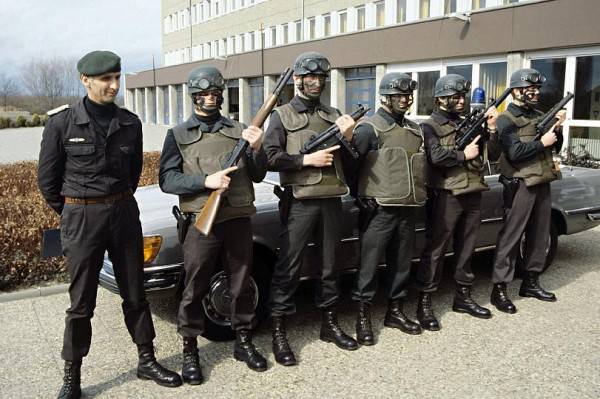
In fact, the course for the development of special units was taken by the German Ministry of Defense shortly after the creation of the Bundeswehr and the entry of Germany into NATO, this work was simply not publicized. The latter was explained by both obvious considerations of secrecy, and the declared ideological attitudes (the original concept of the Bundeswehr as an “army for democracy” under full public control) and legal considerations (the constitution banned the use of the army outside Germany).
Ideological obstacles did not prevent the Germans from creating in 1958 the 1 th airborne division, whose tasks included the capture of strategically and strategically important objects in the rear of the enemy. Later it became the base for the selection of special forces soldiers.
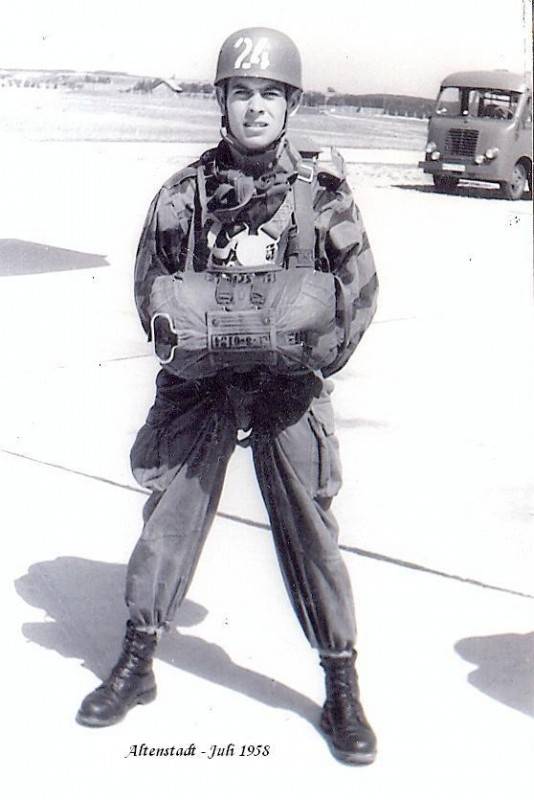
Then, in 1958, preparations began for naval saboteurs for the FRG naval forces that were still being formed at that time. In 1964, they were combined into a separate company of combat swimmers as part of an amphibious group (compound as part of the Navy). The main objective of the company, hosted by the Navy in Kiel, was the conduct of sabotage actions against ships and vessels of the Soviet Baltic at the beginning of the full-scale war with the Warsaw Pact countries. fleet and the Navy of the German Democratic Republic (GDR).
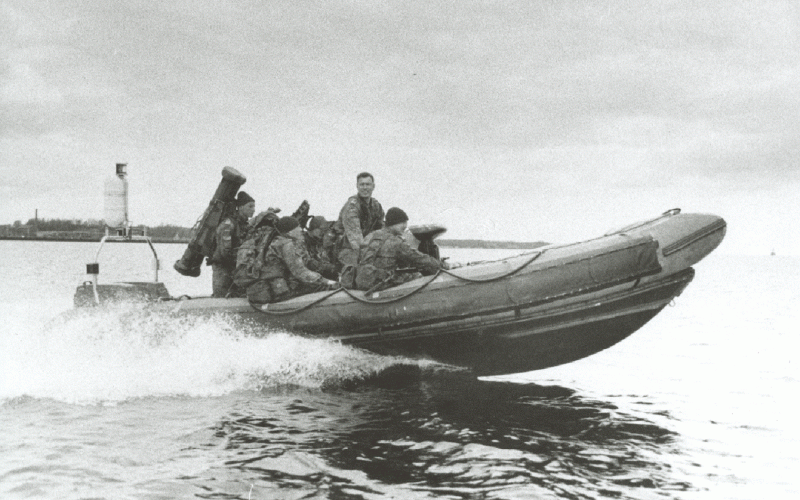
The first specialized reconnaissance and sabotage units within the ground forces were created at the beginning of the 1960s. Their appearance is associated with the deployment of tactical nuclear weapons in Europe, its search and destruction became one of the main tasks of the special forces units of all the major military powers of that time.
The father of the Wehrmacht veteran, Lieutenant Colonel Conrad Rittmaier, appointed in 1961 as the commander of Training Group R at the school of parachutists in Shongau (Bavaria), can be considered the father of the modern German army special forces. In 1963, the “R group” was reorganized into the 200 th deep intelligence company. In the future, on its base, two more deep intelligence reconnaissance companies — the 100 and 300 — were formed. Thus, in 1960-ies in Germany it was formed three deep exploration company (according to the number of available army corps), which have existed up to 1996 years.
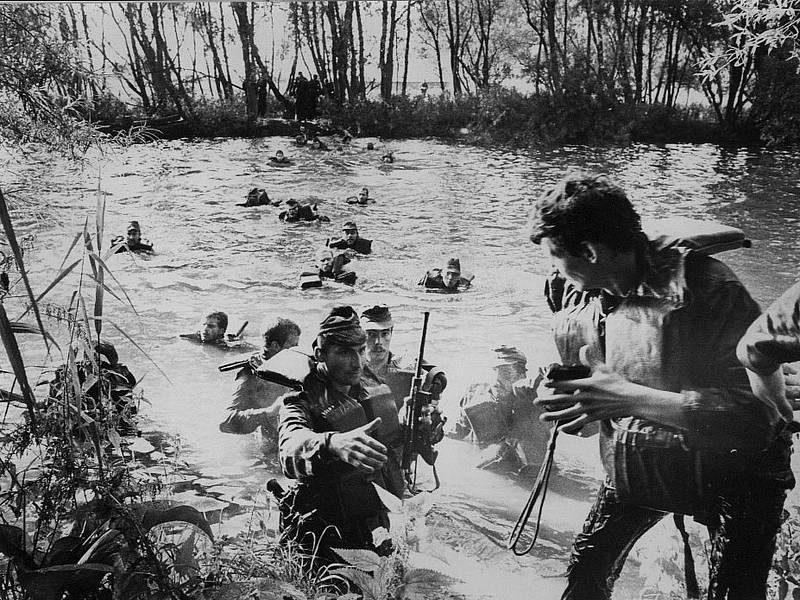
As for the special and most often associated with the phrase "special forces of Germany" special forces GSG 9 (9-I border group), it was formed in September 1973 year. It happened exactly one year after the Munich Massacre, organized by members of the Palestinian organization "Black September".
The name GSG 9 received by virtue of deciding on the formation of an antiterrorist special unit within the framework of the federal border guard, which at that time consisted of eight border groups (analogous to the frontier detachment in our terminology). The new special forces became the ninth. After the reorganization of the Federal Border Guard in 2005 9 the GSG, the task force of about 250 person is in a part of the German federal police directly subordinated to the Minister of Internal Affairs.
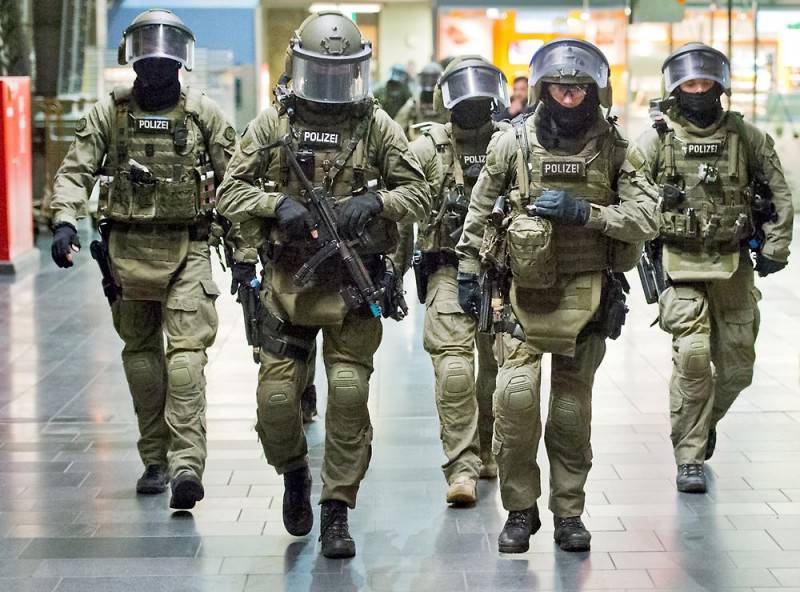
A similar GSG 9 unit in 1974 was created as part of the People’s Police of the GDR. It was called Diensteinheit IX (9-I service), or 9 Volkspolizei Kompanie (9-I company of the national police), and originally numbered 30 people. By 1980, its strength was increased to 111 fighters. There is evidence that Diensteinheit IX was recruited to search for soldiers who had deserted weapons from the units of the Group of Soviet Forces in Germany. After the reunification of Germany in 1990, some of the fighters of the Diensteinheit IX were taken to the Spezialeinsatzkommando police special forces unit in the East German lands of Mecklenburg-Vorpommern and Saxony-Anhalt.
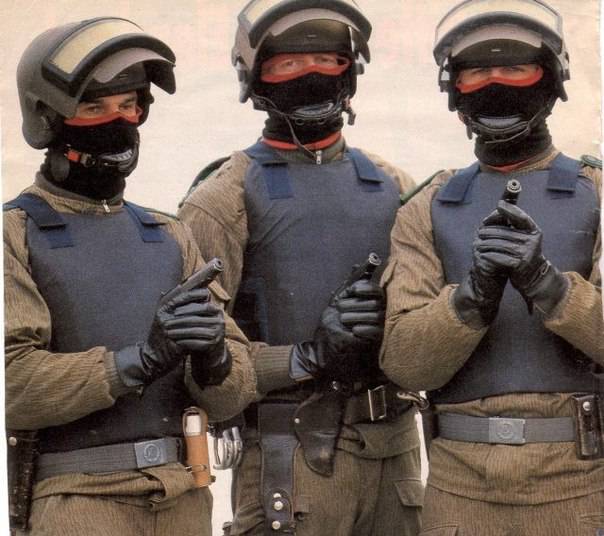
In the spring of 1995, the Minister of Defense presented to the Bundestag Defense Committee a concept for creating a new structure, called Kommando Spezialkräfte (KSK) - the Special Operations Command. The personnel core of the KSK being created were officers of the 25 airborne brigade stationed in Baden-Württemberg. The official date of the creation of KSK - 20 September 1996, when the ceremony of lifting the flag at a military base in the Graf Zeppelin Kaserne Calvet.
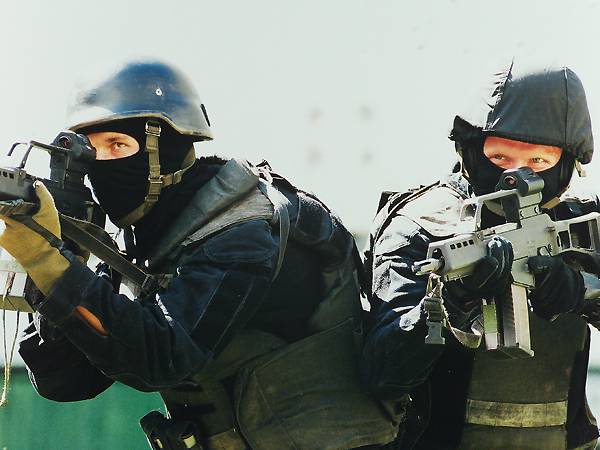
Most of the military personnel were recruited from the former Bravo Kompanie, a company of special forces of individual airborne brigades created in the early 1990-s and already trained for hostage-release operations. Another source of trained personnel was a company of deep reconnaissance of reformed army corps.
At the beginning of the 2000s, the German armed forces approached the next stage of reform. On the agenda was the question of creation. NATO Response Force, in their composition is expected to use the German airborne troops and Special Operations Command. It was decided to combine KSK and airborne forces within a single organizational structure. As a result, in April 2001, a division of special operations (Division Spezielle Operationen, DSO) appeared in the Bundeswehr, in addition to the KSK, it included 26-I and 31-I airborne brigades.
Division_Spezielle_Operationen
The personnel of the special operations division (DSO) of the German army on the exercises Schneller Adler 2011 near Shtendal, Saxony-Anhalt. (c) Jens Schlüter / dapd
The main military campaign of the Special Operations Command was to participate in the war in Afghanistan, where its forces have been very active since November 2001. The KSK Special Forces has a number of successful operations, among which the most important is the fall of 2012 in the year of Mullah Abdul Rahman, one of the Taliban leaders and the so-called Shadow Governor of northern Afghanistan.
KSK in Afghanistan_2013
The personnel of the KSK contingent operating in Afghanistan since the end of 2001 year, 2013 year. In early May 2013, he suffered the first irretrievable losses. (c) Reuters
The experience of participating in the Afghan campaign prompted a change in the German concept of the use of special forces. Instead of the anti-terrorist bias, the priority of the classic tasks of the army special forces returned: reconnaissance, guidance and correction of artillery and aviation, power actions on capture or destruction of important objects and command of the enemy. The idea also arose of combining DSO units with structural units of army aviation under a single command.
When in the 2011 year, the Bundeswehr approached the next stage of reform, the question of creating a new compound, the Rapid Response Division (Division Schnelle Kräfte, DSK), was put on the agenda. The core personnel of the DSK were officers of the division of special operations, in fact it was its re-formation with the addition of army aviation units to it.
In June, the 2014 of the year included the 11 th airmobile brigade of the Netherlands Army in the DSK. The number of personnel in the division now amounts to 11,3 thousand people, including 2,1 thousand Dutch. The division, in fact, is deployed in wartime states and is in constant combat readiness. But it is worth noting that due to the slow pace of upgrading to multi-purpose helicopters NH90 division in the home at any one time to transfer until no more than two of its battalions.
Geschichte_KdoS611
The personnel of the Rapid Response Division (DSK) reconnaissance group overcomes a water obstacle with the help of regular reconnaissance-landing craft. (c) Bundeswehr / C. Schulze
After all the changes so far, the quick-response division includes the Special Operations Command, the German 1 airborne and Dutch 11 airborne brigades, and three army aviation regiments (10 and 30 transport helicopter and 36 combat helicopter).
In operational terms, the KSK is subordinated to the Special Operations Division (Abteilung Spezial operations) of the Joint Operational Command of the Bundeswehr created in 2012. Combat command structures are four special-purpose companies and a special company formed from the experience of missions to Afghanistan. Its main function is the radio-electronic suppression of enemy communications, as well as the suppression of control signals for radio mine explosives and improvised explosive devices.
Each of the four special-purpose combat companies (numbering approximately one hundred men) includes five platoons. Fighters of different platoons, in addition to the general training for all, receive additional specialization. Fighters platoon ground operations receive the skills of driving various vehicles and survival in the desert. Although all the special forces receive parachute training, paratrooper fighters also receive training in high-altitude parachute jumping.
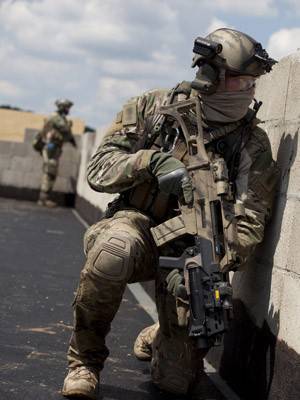
Training amphibious platoon includes additional training of combat swimmers and preparation for survival in the jungle and equatorial terrain. Fighters of platoons intended for operations in mountain and arctic conditions receive additional mountaineering training. It should be noted that each company has a sniper group with the appropriate training in shooting at long and ultra-long distances and disguise.
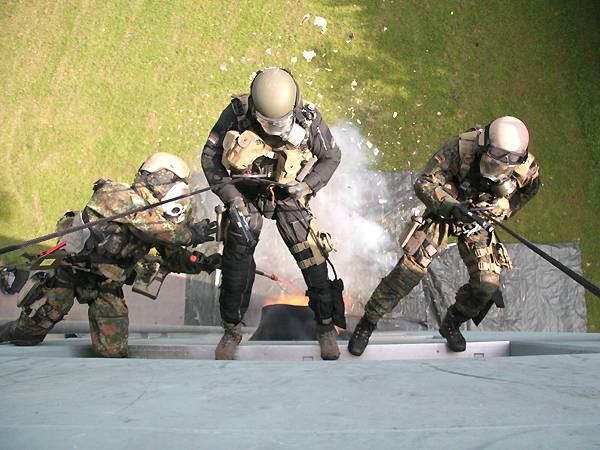
Each combat platoon consists of four units (groups). All fighters receive medical and mine explosive training, with some of the fighters in the group having their own specialization. The minimum group consists of four people and includes including a medic and a mine-blasting specialist.
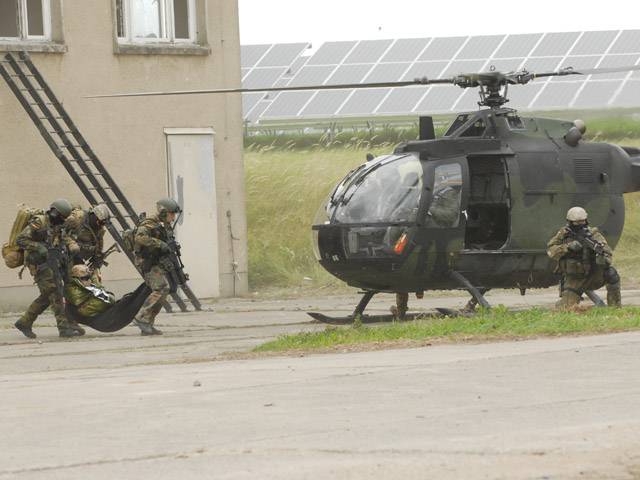
Special Operations Command (KSK) military personnel undergo complex, multi-step training. Firstly, all the candidates in the special forces units are combat survival course Bundeswehr Einzelkampferlehrgang ( «single fighter training», EKL). Currently, it consists of two parts - basic and advanced EKL1 EKL2. The basic stage was previously required to go through to any candidate for the title of officer, now the course is required only for officers of combat units.
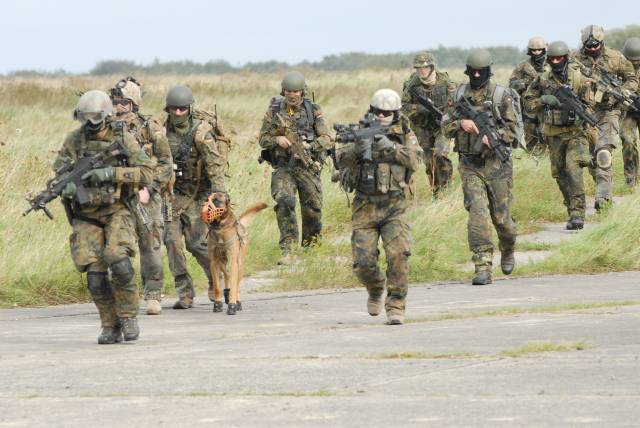
The five-week advanced course EKL2 includes intensive tests of physical condition, mountain, parachute, fire training, learning the basics of disguise, reconnaissance and target identification, training shelters and organizing ambushes. Those who have completed an advanced course receive one more patch and the right to pass the entrance test in KSK.
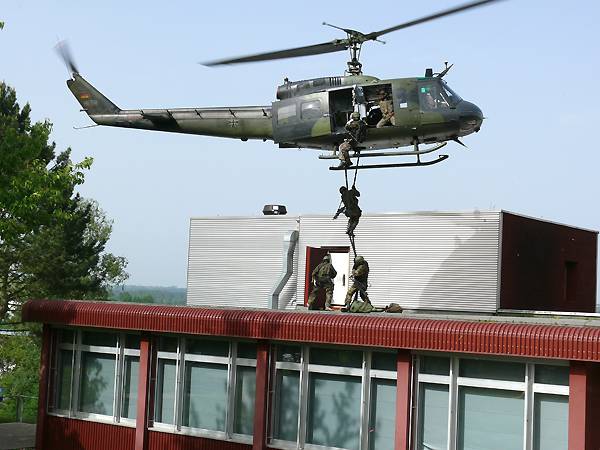
Entrance tests also consist of two stages. The three-week first stage includes a series of physical tests, psychological and intellectual computer tests. Passed the first test step (sifted on average about 60% bidders) allowed for the second phase, which is called "SWAT fighter survival rate."
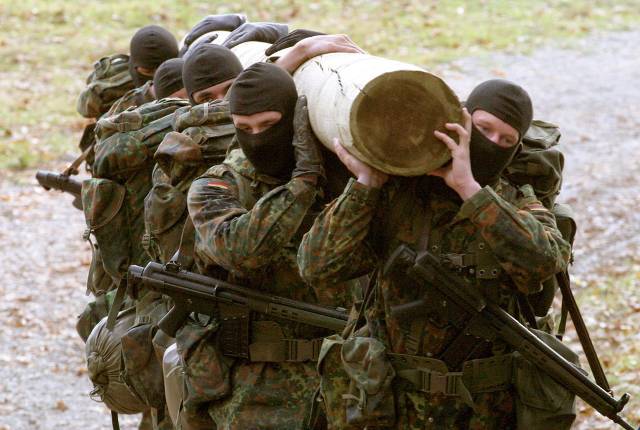
In addition to the 90-hour march through the mountain forest and forest of the Black Forest, the course includes tests for psychological stability. Applicants are subjected to a long stay without sleep, food and water, interrogations with the use of psychological and physical effects (water, sound stimuli). At the beginning of the XXI century, dropouts exceeded 90%, then the course was somewhat simplified, and now the dropout rate has dropped to 80%. Those who have completed the course are given the opportunity to conclude a contract and be enrolled in the personnel lists of the KSK Training and Testing Center.
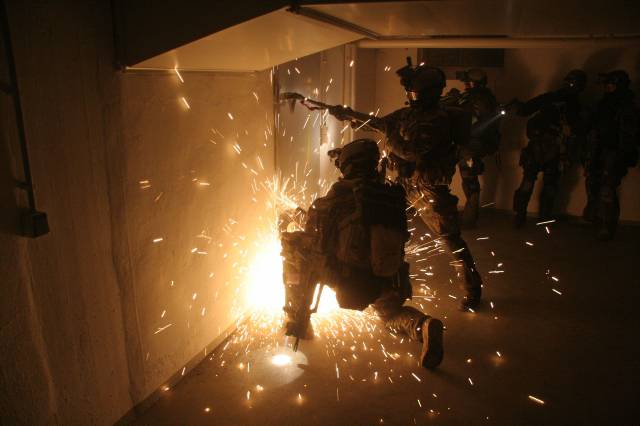
In this center, a soldier undergoes biennial training, which includes numerous courses, trainings, exercises at 17, various training camps and schools around the world. Future KSK fighters undergo Arctic training beyond the Arctic Circle in Norway, desert training in Israel, preparation for combat in the jungle in French Guiana. Much attention is paid to language training - the special forces fighter should be able to speak fluently at least two foreign languages. The special forces training program also includes a hand-to-hand combat course. And only after two (sometimes three) years of intensive training, the serviceman is transferred to combat units. At the same time throughout the entire service (the age of special forces soldiers is limited to 41 a year), the German special forces, in fact, continues to learn.
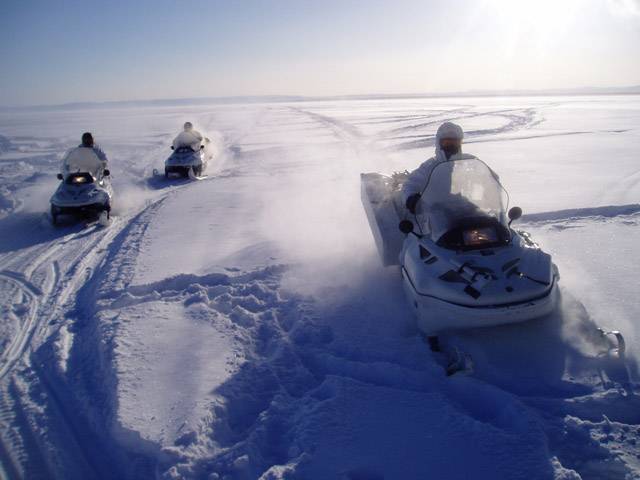
To attract candidates and retain staff, great attention is paid to financial incentives. Each soldier who passes the special forces special tests receives a one-time payment in 3 thousand euros and in addition to his money allowance an increase of about 1 thousand euros per month. For each year of service in special forces units, a soldier receives a premium of 5 thousand euros plus a premium of 10 thousand euros for consecutive years of service.
KSK fighters have high professional reputation, so the biggest challenge in recent years is the departure of experienced fighters in the divisions of private military companies. Moreover, many young owners of the special forces badge, having served only the first contract and having received the corresponding entry in the resume, are sent to work in PMCs. In an attempt to attract recruits, the command in recent years has gone for easing of the conditions of reception and, in part, the training system.
Information